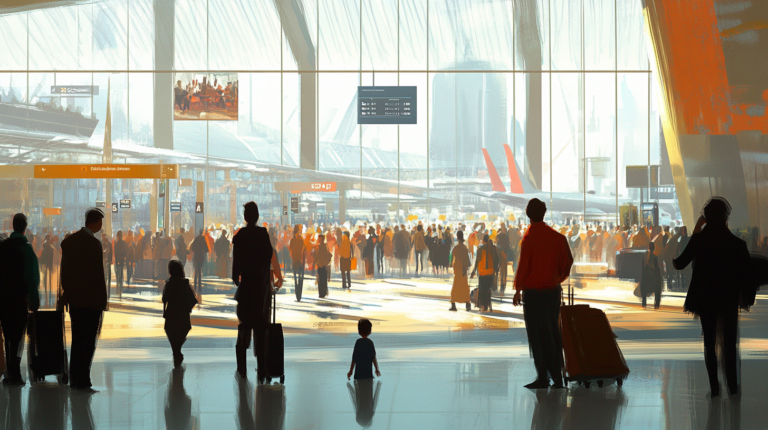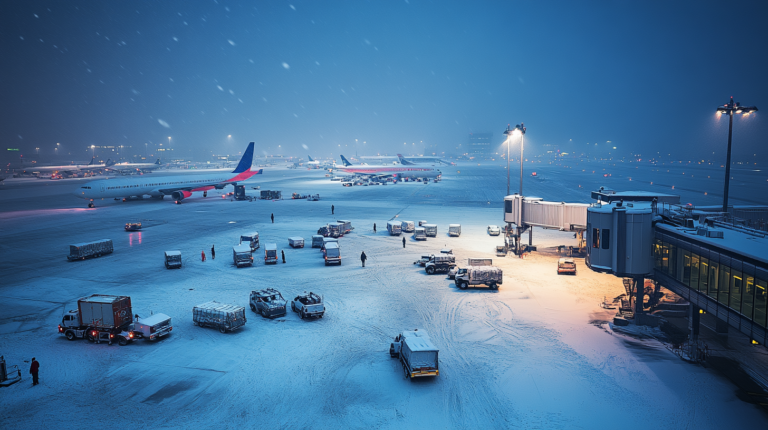Corporate Travel for the Frequent Flyer

In my travels, I’ve found that corporate travel extends far beyond booking flights and hotels—it’s an avenue to build lasting partnerships, showcase professional prowess, and immerse oneself in new markets. It’s now 2025, and I’m in awe of how quickly organizations have embraced cutting-edge travel technologies. From augmented reality itineraries to automated expense-tracking systems, the tools for efficient and secure business travel have never been more impressive.
Embracing thoughtful planning and forward-thinking policies is crucial. I’ve seen firsthand how these measures can slash costs and eliminate administrative headaches, all while ensuring that traveling employees stay focused, comfortable, and safe.
1. Why Corporate Travel Matters

In a world where face-to-face connections drive momentum, corporate travel provides opportunities to seal deals, create memorable moments, and foster collaborations that can’t be replicated through video calls. I’ve observed that stepping onto a trade show floor, meeting potential clients in person, or simply being in the same room with colleagues can yield deeper, more authentic dialogue.
According to a recent analysis from the Global Business Travel Association (GBTA), global corporate travel spend is projected to surpass pre-2020 figures by at least 10% by the end of 2025. These findings echo what countless professionals have shared with me: while virtual meetings might be convenient, they rarely capture the full human element that cements a strong professional bond. In my view, corporate travel remains a vital force in sustaining business growth and innovation—even when it involves tight schedules and expense constraints.
Of course, I understand that employees often tackle demanding agendas, juggling presentations, deadlines, and networking events all in a single trip. That’s why clear internal policies that guide travel approvals, expense thresholds, and risk management protocols help transform business journeys into productive experiences. When organizations treat their travel policies as living documents—responsive to new safety guidelines and emerging technology—they empower frequent flyers to navigate any itinerary effectively.
2. Essential Strategies for Cost and Safety

One of the most common strategies I’ve seen for keeping corporate travel budgets in check is leveraging centralized booking systems. These systems, coupled with negotiated group discounts, can produce significant savings. I’ve personally appreciated how automated fare alerts highlight cost-friendly alternatives when booking flights or choosing accommodations. Simple but powerful steps like these often form the backbone of winning travel programs.
Safety is equally crucial. Organizations that take the time to monitor real-time risk alerts and offer dedicated emergency support have a measurable edge when it comes to traveler well-being. A recent Deloitte study underlined how companies with robust contingency plans see higher employee satisfaction and lower downtime after unexpected disruptions. In 2024, for example, I witnessed how effective crisis communication kept travelers updated during rolling airline strikes in Europe, allowing many to pivot to alternative routes without derailing entire projects. Those proactive measures reflect an authentic commitment to employee welfare using well-defined policies.
Prioritizing both cost efficiencies and safety is more than just a balance sheet goal—it’s a statement that employee morale and risk management truly matter. I’ve noticed that frequent flyers who feel supported are more eager to represent their companies, forging stronger business relationships and returning with new ideas.
3. Top Tools and Platforms

Over the years, I’ve tested a variety of corporate travel management platforms. Corporate Traveler’s Melon platform stands out for blending 24/7 human assistance with a sleek online interface, allowing travelers to handle bookings, adhere to policy, and track expenses all in one place. In my own experience, the ability to chat with a real person at any hour has been invaluable when a sudden travel hiccup arises.
FCM‘s tech-driven method, featuring cost-saving dashboards and real-time location tracking, also garners praise in corporate circles. I’ve often seen Fortune 100 companies implement FCM’s platform to scale large, multi-leg itineraries across global teams. According to industry data, their award-winning solutions cut down administrative overhead by up to 30%, partially thanks to automated invoice reconciliation and integrated traveler profiles.
On the other hand, KAYAK for Business simplifies the booking process for growing organizations, offering consolidated expense reporting, itinerary approvals, and an easy-to-use interface. I’ve found that smaller teams, which may not yet need an enterprise-level solution, enjoy how quickly they can get set up and secure flights or rentals without excessive red tape. CWT‘s global approach is equally robust, leveraging data analytics through myCWT to forecast travel costs. In 2025, they plan to extend coverage of dynamic pricing models across hotels and ground transport, a move that, in my opinion, highlights an evolving trend toward real-time cost adjustment.
Finally, there are flexible, multi-city routes and round-the-world bundled tickets offered by providers like Corporate Business Travel. In my own research, these options are particularly appealing to frequent flyers who need to jump from hub to hub while sparing themselves from repetitive layovers.
4. Industry Insights and Trends

A recurring theme in the 2025 landscape is the steady rebound of corporate travel. I’ve seen companies shift from purely virtual sessions back to in-person summits, underscoring the irreplaceable value of human interaction. This return also emphasizes sustainability and employee satisfaction as top priorities. Many booking systems now integrate carbon emissions tracking, allowing me and countless others to make more eco-conscious decisions when planning routes.
Risk management has become more critical than ever. I’ve witnessed a particular uptick in advanced analytics usage: from AI-driven travel disruption predictions to real-time crisis alerts. These tools provide immediate insights into everything from weather forecasts that might affect flight routes to local health and safety bulletins. It’s a remarkable sign of how far technology has come in just a few years.
Another clear trend is the increased presence of women in the travel tech and aviation sectors. I always find it refreshing to meet female engineers, data scientists, and operational leads within major airlines and travel platforms, which aligns with my belief in championing women in STEM fields. Their perspectives and technical contributions often lead to more equitable travel solutions for everyone.
5. Transforming Business Trips into Strategic Investments

In my view, turning each trip into a measurable return on investment is all about optimization. For instance, modern itinerary-building tools can factor in everything from flight times to hotel loyalty programs, giving travelers strategic options before they even finalize their bookings. According to a 2025 poll by Business Travel News, 68% of respondents expected to recoup their business travel expenses within six months of sealing a deal—that’s a compelling testament to the power of personal interaction.
I’ve also seen how integrating advanced analytics solutions can make a big difference. Real-time dashboards allow travel managers to visualize burn rates, spot cost anomalies, and negotiate better rates with vendors after analyzing usage patterns. When combined with automated expense filing and streamlined approvals, it’s easier for employees to stay on track and focus on what truly matters: building impactful relationships.
Equipping your teams with a comprehensive travel management system sets the stage for growth. In practice, that might look like exclusive hotel rates, specialized loyalty perks, and supportive data analysis that tracks how every trip contributes to larger company goals. I believe it’s this holistic approach—one that intertwines policy, safety, and strategic partnerships—that truly elevates corporate travel to the next level.
Final Thoughts

Whether you’re an executive chasing high-stakes partnerships or a first-time business traveler exploring new territory, corporate travel offers endless possibilities. As I’ve learned, each leg of the journey carries its own significance, from the energy on the plane to the thrill of shaking hands with new contacts upon arrival. Embracing the right mix of technology, supportive policies, and a sense of adventure can transform any trip into a catalyst for professional growth.
Staying adaptable is just as important. In 2025’s fast-moving environment, travel programs that emphasize both employee well-being and budget alignment gain a genuine advantage. By continuously refining tools and procedures based on real-time data, organizations can keep pace with shifting demands and traveler expectations.
In the end, corporate travel is about investing in face-to-face encounters to accelerate success. If planned and executed wisely, every boarding pass can open doors to new collaborations and opportunities.
Amelia Yeaher’s Take
I’ve always been fascinated by the energy that pulses through airport terminals—the chorus of boarding announcements, the swirl of languages in the lounges, the electric promise of forging new partnerships in distant cities. In my experience, those shared moments on the road undoubtedly enrich our professional lives and unify teams through unspoken camaraderie.
Even with the rise of virtual channels, there remains a certain magic to stepping into new spaces and seeing synergy unfold in real time. For me, that’s what corporate travel is all about: uncharted horizons and the powerful transformations that emerge when we show up, ready to learn and grow.






